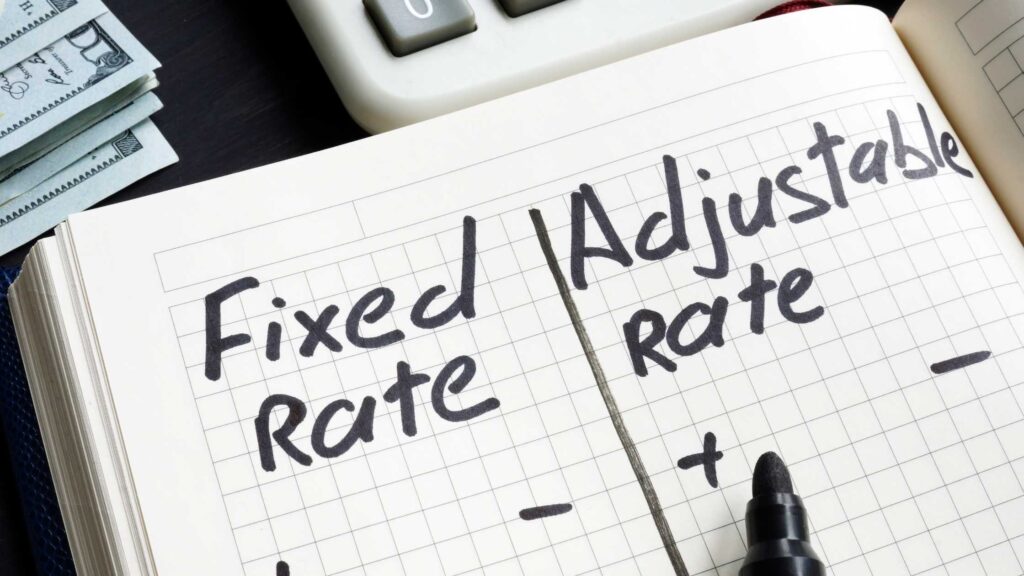Introduction
When it comes to mortgages, one of the most important decisions you will make is whether to choose a fixed-rate or an adjustable-rate mortgage. Both options have their advantages and disadvantages, and it’s crucial to understand how each works before making a decision. In this article, we will explore the differences between fixed-rate and adjustable-rate mortgages and help you choose the right option for your needs.
Fixed-Rate Mortgages
A fixed-rate mortgage is a type of loan where the interest rate remains the same throughout the entire term. This means your monthly mortgage payment will stay consistent over time, providing stability and predictability. Fixed-rate mortgages are often the preferred choice for individuals who want a long-term commitment and are looking for a secure and reliable option.
Benefits of Fixed-Rate Mortgages
- Predictable Payments: With a fixed-rate mortgage, you can accurately budget for your monthly payments since they will remain unchanged over the term of the loan.
- Protection against Rate Increases: When interest rates rise in the market, your fixed-rate mortgage remains unaffected. This protection can be valuable if you’re concerned about potential rate hikes in the future.
- Simple to Understand: Fixed-rate mortgages are straightforward and easy to understand compared to the complexities of adjustable-rate mortgages.
Drawbacks of Fixed-Rate Mortgages
- Higher Initial Interest Rates: Compared to adjustable-rate mortgages, fixed-rate mortgages often have higher starting interest rates. This means you may pay more in the beginning compared to what you might have paid with an adjustable-rate mortgage.
- Limited Flexibility: Once you lock in a fixed interest rate, you are committed to it for the entire term of the loan. If interest rates decrease significantly in the future, you won’t be able to take advantage of the lower rates unless you refinance.
Adjustable-Rate Mortgages
An adjustable-rate mortgage, also known as an ARM, is a type of loan where the interest rate is initially fixed for a specific period, typically 5, 7, or 10 years, and then adjusts periodically based on market conditions. These adjustments can occur annually or monthly, depending on the terms of the loan. Adjustable-rate mortgages are popular among individuals who anticipate changes in their financial situation or plan to sell the property before the initial fixed-rate period ends.
Benefits of Adjustable-Rate Mortgages
- Lower Initial Interest Rates: Adjustable-rate mortgages often have lower initial interest rates compared to fixed-rate mortgages. This can result in lower monthly payments during the initial fixed-rate period, making it an attractive option for individuals who want to save money in the short term.
- Flexibility: Adjustable-rate mortgages offer flexibility in terms of payment options and terms. Some ARMs allow you to make interest-only payments or provide the option to pay off the loan faster without penalties.
- Potential for Savings: If interest rates decrease after the initial fixed-rate period, you may benefit from lower monthly payments without having to refinance.
Drawbacks of Adjustable-Rate Mortgages
- Market Uncertainty: Since the interest rate on an adjustable-rate mortgage is subject to market conditions, your monthly payments can increase significantly once the initial fixed-rate period ends. This uncertainty can be challenging for those who prefer stability and predictability.
- Risk of Rate Increases: If interest rates rise, your monthly payments can also increase over time, potentially causing financial strain.
- Complex to Understand: Adjustable-rate mortgages can be more complex to understand and require careful analysis of potential rate adjustments and their impact on your finances.
Choosing the Right Option
When deciding between a fixed-rate and an adjustable-rate mortgage, several factors should be considered, including:
Financial goals
Determining your long-term financial goals can help you decide which option aligns best with your needs. If you plan to stay in the property for a long time and prefer stability, a fixed-rate mortgage may be the better choice. If you expect changes in income or are planning to sell the property before the initial fixed-rate period ends, an adjustable-rate mortgage might be more suitable.
Current interest rates
Assessing the current interest rate environment is essential. If interest rates are low, a fixed-rate mortgage can provide protection against potential future rate increases. However, if interest rates are high, an adjustable-rate mortgage might provide lower initial rates and potential savings in the short term.
Risk tolerance
Consider your risk tolerance and ability to manage potential increases in monthly payments. If you prefer a steady and predictable payment structure, a fixed-rate mortgage is the safer option. On the other hand, if you are comfortable with potential fluctuations and want to take advantage of lower initial rates, an adjustable-rate mortgage may be a viable choice.
Summary
Choosing between a fixed-rate and an adjustable-rate mortgage is a significant decision that depends on your financial goals, risk tolerance, and current interest rate climate. Fixed-rate mortgages provide stability and predictable payments but may have higher initial rates and limited flexibility.
Adjustable-rate mortgages offer lower initial rates and potential savings, but come with market uncertainty and the risk of rate increases. Take the time to carefully assess your circumstances and consult with a mortgage professional to make an informed choice that aligns with your needs and long-term financial goals.







